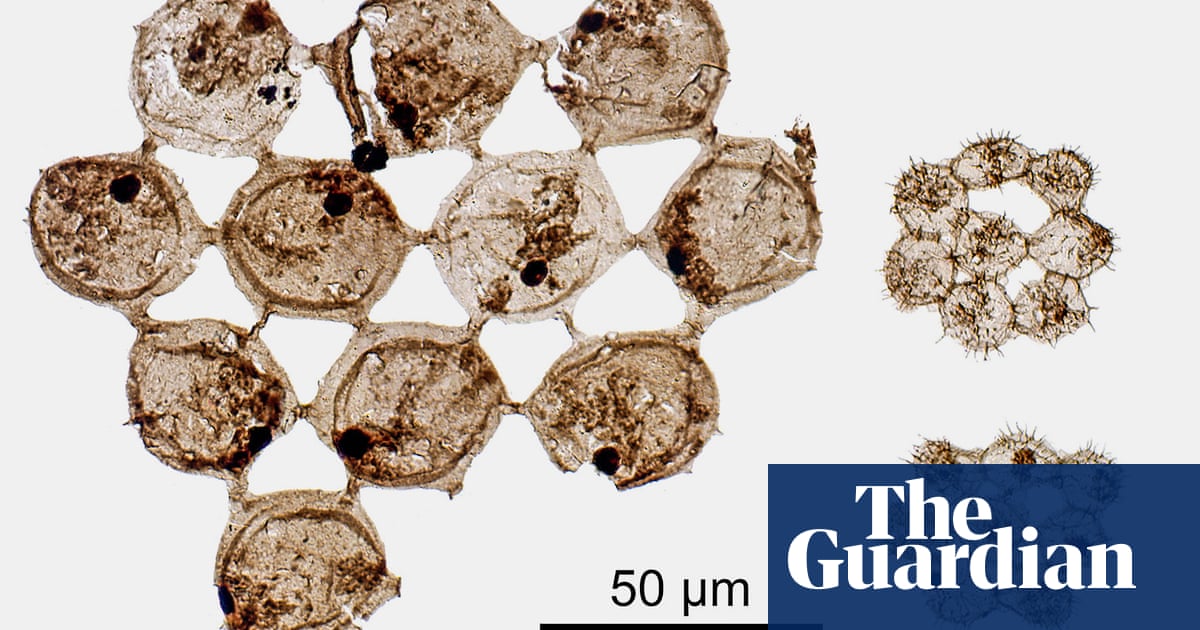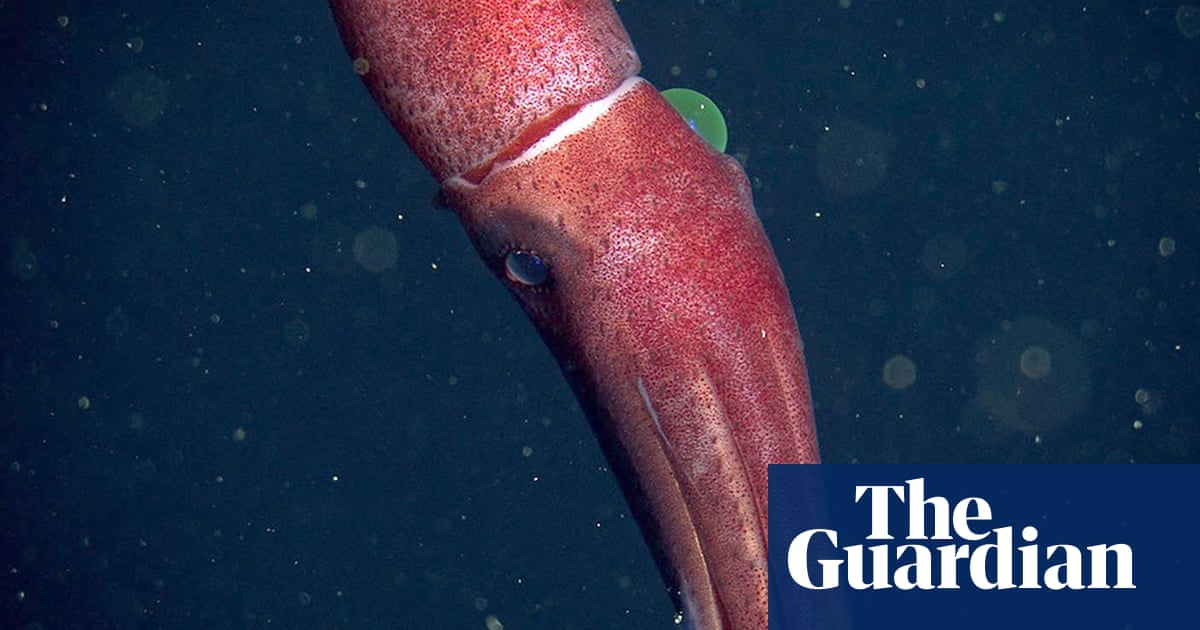
Half a billion years ago, the ocean was filling up with animals for the first time, including scuttling trilobites and spiky worms. Little is known, however, about what was happening further down the food chain.
Now, a British palaeontologist believes he may have found fossilised phytoplankton – forerunners of the tiny but vital algae that today suck masses of carbon out of the atmosphere and produce about half the oxygen we breathe. The fossils, dating back to the Cambrian period – 538m to 485m years ago – are microscopic, roughly the width of a human hair, and lived in the ocean back when there was no life on land.
Tom Harvey, from Leicester University, discovered them in rocks he had collected from a logging trail in Newfoundland, Canada, which he was examining using a microscope to search for animal skin. Instead, he came across a cluster of spiny objects stuck together in neat geometric clusters.
They were unlike anything he’d seen before. “The cells were quite big, they formed quite a large colony that has this amazing geometry,” he says. They reminded him of the pattern of butterfly eggs laid on a cabbage leaf, but he had no idea what he was looking at. “It was just too mysterious,” Harvey says. “I didn’t even want to hazard a guess.”
It was years before he found more of these microfossils. The process involves dissolving rocks in powerful acid, leaving carbon-based fossils intact, floating in a watery residue. Harvey then uses a microscope to search each drop of liquid, and suck up individual clusters of cells with an eyedropper. Eventually, he had a collection of a few dozen similar-looking fossils.
Childhood memories were stirred of pond dipping and examining pond water under a microscope, giving Harvey the idea that his new fossils – although found on land – could be phytoplankton.
The discovery is published in the journal Proceedings of the Royal Society B , which describes fossils shaped like little flat plates and rings, just one cell thick; the closest match Harvey could find today are algae that live in ponds and lakes.
Harvey believes that, judging by their neat, symmetrical shapes, these colonies formed in a similar way to some living freshwater phytoplankton: rather than dividing into ever bigger blobs of cells, the parent plankton cells split off daughter colonies in a single step, then let them go.
Living phytoplankton do this when they sense animals nearby. Chemicals wafting through the water from grazing creatures, such as water fleas, stimulate the plankton to divide and become spinier, which makes them more difficult to eat.
Harvey thinks the ancient phytoplankton may have done the same thing. If he’s right, then this is the earliest evidence that animals had begun filtering seawater for phytoplankton, a critical part of the way ocean ecosystems work today.
The discovery could help fill a huge gap in the fossil record for plankton. The main varieties living in the ocean now can be traced to only about 100m years ago, during the time of the dinosaurs, compared with Harvey’s fossils, which are about 510m years old.
Hoards of microfossils date back earlier in Earth’s history but remain stubbornly enigmatic. Palaeontologists call them “acritarchs”, but don’t know what they were. Some could be cells broken from phytoplankton colonies similar to those that Harvey has found. He hopes his fossils could help other palaeontologists identify more of these colonies by showing them what to look for.
“I think they’ll be out there on microscope slides and collections in museums all around the world,” he says.












